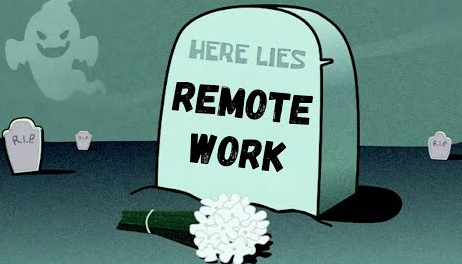If I Were an Artist in the Gaming Industry (And Beyond)
- Patrick Bostwick

- Jun 25
- 4 min read
Introduction:
Let me be clear: I’m not an artist. I’m not going to out-sketch you or win an ArtStation award. But I’ve hired artists, advised them, coached them, and watched them change companies.
My path started in Detroit, built on grit and reinvention. I was a robotics engineer, then a Michelin-level chef under Gordon Ramsay. I helped build Call of Duty, launched multiple businesses, and now run Upscale Recruiting—a firm trusted by companies across AI, gaming, finance, and frontier tech. I’m also a career coach who helps people completely rethink where their creative energy can take them.
So if I were an artist today—here’s how I’d approach it. Not just as a designer. Not just as a creative. But as a strategic operator with vision, edge, and leverage.

I’d Think Like a Revenue Generator, Not Just a Creative
Most artists don’t realize this, but in boardrooms, creative isn’t viewed as overhead—it’s viewed as leverage only if you tie it to money.
If I were an artist, I’d reframe my work in terms of ROI:
How did my UI speed up onboarding and reduce drop-off?
How did my cover art drive clicks and boost installs?
How did my iconography reduce customer support tickets by 17%
Companies invest in people who create value. If your work can connect to growth, efficiency, or retention—you stop being “the artist” and start being “a strategic asset.”
I’d Design for Moments, Not Just Screens
We live in an attention economy. The average user has 4 seconds to be impressed—or they’re gone. That means design isn’t just about fidelity.
It’s about impact. If I were an artist, I’d obsess over moments:
What’s the first 3 seconds of player onboarding feel like?
How does my menu animation subconsciously guide a decision?
How does lighting direction emotionally prime a scene?
I'd build art for micro-emotions and macro-retention—because in 2025, the feeling is the feature.
I’d Infiltrate the Business Side of the Building
Most artists hang out in Notion, Slack, and Figma.
If I were an artist, I’d also be lurking in:
RevOps calls (to understand monetization flows)
Marketing standups (to understand funnel metrics)
Investor decks (to see what leadership is selling to the market)
You want to get promoted? Ship features that marketing can pitch and investors can understand. I’d stop waiting to be looped in—I’d loop myself in.
I’d Build for Licensing and IP—Not Just Aesthetics
If you work in games or entertainment, you’re not just making cool characters. You’re building IP. And that has downstream impact—on merchandise, cinematic adaptation, in-game economies, and global brand growth.
If I were an artist:
I’d learn what makes a character licensable
I’d study how Fortnite, Pokémon, and Riot turn assets into empires
I’d treat every design as a brand blueprint—not just an art drop
That’s how you move from freelancer to franchise builder.
I’d Study Industries Artists Don’t Pay Attention To
Creatives often limit their scope to games, film, and entertainment. I’d go way beyond:
Fintech: UI art that makes abstract data human
Healthcare: Game-like patient journeys, visualization of symptoms
Defense & Training Simulations: Unreal Engine meets real-world scenarios
Retail & Fashion: 3D asset pipelines for hyper-personalized consumer content
AI & Data Labeling: Artists training the next generation of visual models
The best-paying jobs in the next 10 years won’t be on job boards—they’ll be at the collision point of design + machine + emotion. And artists are finally at the center of it.
I’d Build Strategic “Visibility Funnels”
ArtStation portfolios are great—but they’re static.
If I were serious about building demand around my skills, I’d create visibility in 3 layers:
Passive: SEO-optimized portfolio with case studies that rank
Semi-Active: Short-form posts on LinkedIn and YouTube Shorts around your process, not just your result
Active: Strategic outreach with proposals, not portfolios ("Here’s how I’d improve your UX with 3 assets")
Most artists wait to be discovered. I’d make sure I was impossible to ignore.
I’d Treat AI Like My Intern—Not My Replacement
AI is not a threat—it’s a force multiplier. If I were an artist, I’d use GenAI to:
Rapidly explore color and composition directions
Prototype 50 UI variants in a weekend
Build client previews faster than competitors
But I’d never let AI dilute my taste or voice. Because in a sea of sameness, the people who know what not to generate will own the future.
How Upscale Recruiting Helps Artists—and the Companies That Need Them
At Upscale Recruiting, I don’t just connect people to jobs—I help visionary companies find the talent that reshapes their vertical. Whether you’re in gaming, fintech, AI, simulation, or entertainment, I place creatives who don’t just draw—they move business.
As a career coach, I help artists turn potential into leverage. As an entrepreneur, I know what makes creative work valuable. As someone who started in Detroit and now works in the Bay Area, I’ve seen firsthand how far you can go when you stay relentless and think differently.
This isn’t just a job market—it’s a creative economy. And if you know how to play it, you don’t just get hired—you get chosen.
Conclusion:
If I were an artist in 2025, I’d stop asking where I "fit", and I'd surely relax on filling out aimless job applications. —and start defining where I lead. I’d think like a business. Move like a strategist. Build like a brand. Because in the end, creativity isn’t what gets you in the room.
Creativity + strategy is what keeps you there—and builds empires from it.
If you’re ready to make that shift—I’m ready to help you do it.
#gaming #creativity #technology #innovation #entrepreneurship #artist #gameart #designthinking #AI #futureofwork #careers #startups #digitalart #UXdesign #careerstrategy #careercoach #bayarea #detroit #strategy #visualdesign #creativejobs #artdirector #creativeentrepreneur #AIandDesign #designops #fintechdesign #virtualproduction #creativeleadership #UpcaleRecruiting #CreativeCareers #ArtInTech



Comments